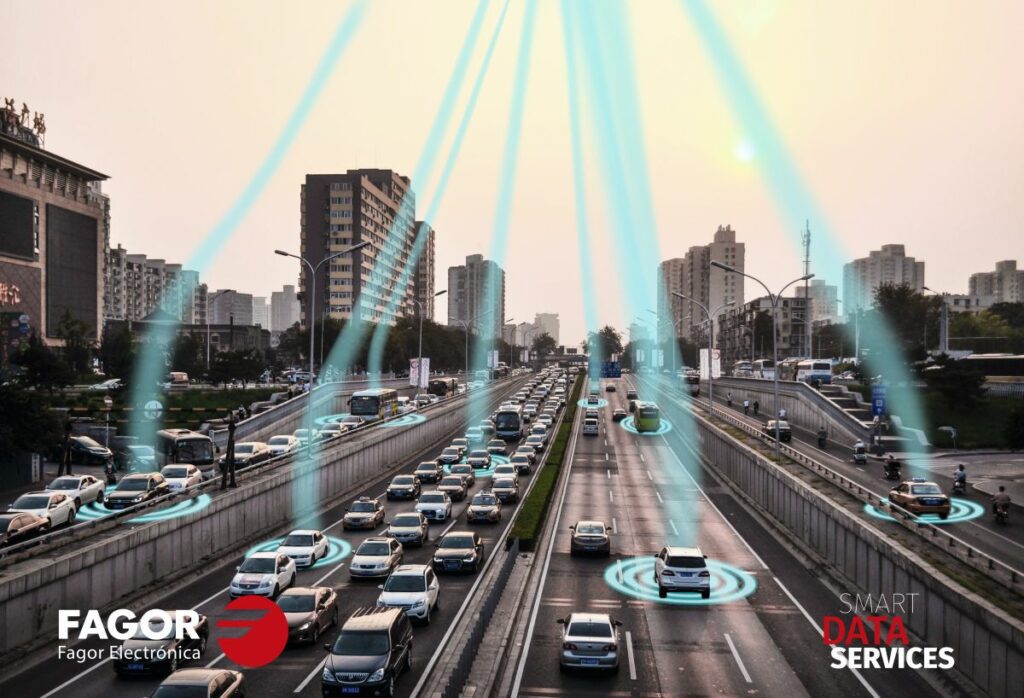Why is the vehicle connected?
“Smartphone is everything” was the headline of an article while I was scrolling through my news feed from my smartphone. I didn’t read that article because I was in a work chat with people from Santander, Bogotá and Mondragón to coordinate the communication because we had to send someone to Lima, but the message of the article was immediately captured. Nowadays the smartphone is an agenda, a camera, a video camera, a recorder, email, social media, a bank office, video-games, the “roomba” controller, a light… and even a telephone!
What is a “connected vehicle”?
When it comes to answering the question: what a connected vehicle is, it comes to mind what we see from advertisement: be able to use the smartphone to interact with the car, open and close doors and windows, know where it is and the routes it did, receive maintenance and faults warnings and that kind of functionality that vehicles incorporate in these days. Well, yes, that´s also a connected vehicle, but there´s more.
We can also think in the “prototype of the near future” level, the autonomous vehicle, which would be the maximum expression of the concept “connected vehicle”, the one who can communicate with the owner (or user) and also has dozens of communication routes to interconnect with the environment and interpret it, with other vehicles, with the control and monitoring center, with the internal devices and sensors, with positioning satellites (GPS), with internet and its services (mapping, messaging, etc) and even with our virtual home assistant to continue listening at home the same song that was playing when you were parking!
But we are thinking all of this from the perspective of the owner of a private vehicle, and this is not the point… What is the connectivity for the manufacturer or seller of the vehicle once it is sold? What is it for the professional vehicles such as trucks, buses, etc? Why should they be connected from their production to their retirement from the roads?
Since many years ago, fleet companies, whether they transport goods, passengers or services, have understood the need of having a fleet management system to measure and optimize their operation, be more competitive and increase security. But this has always been understood as a separate service and unlinked from the brand or manufacturer of the vehicle. All of this was and still is a “connected vehicle”.
Nowadays, manufacturers and dealer networks still have much more information about how visitors use their website than they do about the use of their vehicles once they leave the dealership. They know which models are the most and less seen on the website, the click on the offer banners, etc. But they don’t know anything (or just a little) about that truck they sold to that big transport company a year and a half ago and have not bought another one again. They just cross their fingers and do the necessary management to bring it to the official workshops and do the maintenance, register it in the system and what the technical manual indicates.
Could you imagine your vehicle “updating” and correcting its faults automatically as your smartphone does? Well, with vehicles we can have the same vision, although much more complex since they have “a lot of hardware” and mechanical parts.
The fact of being able to have all parameters related to the use of the vehicle, no matter who the owner is, obtained from the vehicle’s own computer, and being able to receive them remotely and in real time and store them during vehicle’s life is very valuable to the brand, the seller and its workshops or the “rentier”. Currently, there are Business Intelligence tools with high-value statistical reports that allow you to go from the most general to the most specific part in a few clicks. Putting all this intelligence at the service of your business is a big deal!
Imagine, as a manager of a dealer network, being able to measure and manage all this information, all the preventive and corrective maintenance, the areas and type of roads they drive on, the visits to unauthorized workshops, the aggressiveness with which they may have been operated, bad driver practices that impact on the life of the engine and wear of parts, the fuel they have consumed and the hours they have spent at idle (engine running without movement, which means an increase in the hourmeter and not the odometer) and so on. All this information, added to new processes and services, allows us to position ourselves at the forefront of the market, maintaining on the one hand vehicles in perfect conditions and on the other hand satisfied customers. Customer satisfaction is given through personalized service like never before, anticipating and taking care of vehicle maintenance proactively and giving advice on the ideal model for the type of work they do, also increasing the value of the asset in the second hand market for its complete traceability and guarantee of use.
Customers are going to acquire a vehicle with an advanced fleet management system incorporated, which will allow them to optimize their operations, reduce costs, increase the security and useful life of the asset, and to not worrying about its failures and maintenance. They can also forget about informing their managers about the incidents, both vehicle and of the operation, since this information would be received in an automated way. If we add this to the previous information, we can guarantee that we are looking at a model with high returns on investment for vehicle sales companies and the manufacturers´ own brands.
And this is, in my opinion, what should be the answer to the question that this article is titled.



